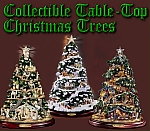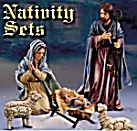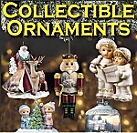Introduction by Paul D. Race for Family Christmas OnlineTM Charles Dickens (1812-1870) published The Cricket on the Hearth in 1845, in an attempt to follow-up on the success of his first great, magical Christmas novella, A Christmas Carol. Cricket is a "novella," which is to say it is pretty long to try to finish at one sitting, but not as long as a novel. It was quite popular at first, inspiring plays and opera, but nowadays is less so.
Charles Dickens (1812-1870) published The Cricket on the Hearth in 1845, in an attempt to follow-up on the success of his first great, magical Christmas novella, A Christmas Carol. Cricket is a "novella," which is to say it is pretty long to try to finish at one sitting, but not as long as a novel. It was quite popular at first, inspiring plays and opera, but nowadays is less so.
This story follows a "Carrier" (delivery-man) and his much younger wife through three climactic days leading up to their first anniversary. The cast of characters includes:
 A Cricket on the Hearth - In England a century ago, having a cricket on the hearth meant that you were prosperous enough to keep a fire burning on cold nights. In various cultural contexts, a cricket could simply mean good luck, or be a conscience (as in Pinnochio), or represent the soul of an ancestor who is staying around to watch over the family. In this story, the Cricket is really a household fairy who supervises all of the other household fairies in their work to bring blessings to the Peerybingle family. A Note about Dickens' Prose - In the days when this story was published, Dickens' prose was treasured as much for its cleverness (called "wit") and unforgettable characters as it was for its plot. To modern readers, this story's plot at first may seem all but lost in the cleverness. For example, Dickens claims that "Dot" Peerybingles' shoes have " . . . worked innumerable rough impressions of the first proposition in Euclid all about the yard." Euclid was an early geometrist whose first proposition has to do with triangles. Dickens may mean that Dot has left many triangle-shaped prints in the snow. But it doesn't really matter what he is saying about Euclid - it has nothing to do with the story. Rather, this is Dickens' way of "winking" at his audience as if to say, "Yes, I know you are educated people who are not usually concerned with the cares of people like the Peerybingles, but so am I, and I think their story is worth listening to." As odd as it may seem to 21st-century audiences, this attitude toward the authors' own characters is common in 19th century popular prose. As an example, O. Henry adopts a similar tone when introducing the household cares of the young couple in "The Gift of the Magi." Fortunately this sort of "cleverness" thins out in a couple of pages, and Dickens' storytelling becomes more prominent. A Note About Singing Household Items - Modern readers are also "thrown" when the kettle, the cuckoo clock and the Cricket seem to join in a singing match at the beginning of the story. This seems to be Dickens' way of preparing us for the chief "magical" component of the story, the notion that fairies of home and hearth are surrounding and infusing the Peerybingle household with unseen, but appreciated blessings. Don't let Dickens' tone or his self-willed household objects keep you from enjoying the story - the human characters do get to speak for themselves eventually, and several of them are worth the time it takes to get to know them. AdaptationsThe Play - In 1859, Dion Boucicault's play Dot, A Drama in Three Acts premiered in New York City. The script, frankly, is easier to follow than the book in some ways, because it introduces us to the household fairies and their mission before it introduces us to Dickens' array of odd characters. But it also reveals the book's major plot twist (which occurs in the third chapter of the book) in the first act. Still, it might be worth investigating for a community theatre group that feels that it has done too many A Christmas Carol adaptations. If I was staging a play today, though, I think I'd go back to the book. However, I might be tempted to make the kettle, cuckoo clock, and cricket into puppets and use them as a sort of Greek chorus throught the show. The kettle's song "It's a Dark Night," would certainly be set to music. The Operas - The breadth of this story's popularity is indicated in part by how seriously it was taken in continental Europe. Riccardo Zandnai's Italian opera Il Grillo Del Focolare premiered in 1980, followed by Karl Goldmark's Das Heimchem am Herd, in 1912. I don't know if the kettle gets any lines in either production. I think a good team could make a worthwhile musical out of this story today, although I think I'd go back to the novel for inspiration and bypass the Boucicault altogether in that case. The Movies A silent film version in 1909 (D. W. Griffith) was followed by one in 1923, written by Caroline Francis Cooke, starring Paul Gerson and Virginia Brown Faire, and directed by Lorimer Johnston. Videotapes of the latter movie were available in the early 1990s but you'd have to look hard to find one now. In 1967, Rankin-Bass produced an animated, more child-friendly, version of the story. In spite of the voices of Danny and Marlow Thomas and Roddy McDowell, this production did not gain as many fans as Rankin-Bass' other animated Christmas ventures. You may be wondering why a story that resulted in at least one play, two operas and three movies is so unknown today. Possibly because today's readers don't usually get past Euclid and the singing household implements in the first couple of pages. Give it a try yourself; we think you'll be glad you did. Go to The Cricket on the Hearth by Charles Dickens
Paul and Shelia Race To return to the Other Christmas Stories Page, click here. To return to the Family Christmas OnlineTM Home Page, click here.
|


| 
| 
| 
| 
|
Note: Family Christmas OnlineTM is a trademark of Breakthrough Communications(tm) (www.btcomm.com).
All information, data, text, and illustrations on this web site are
Copyright (c) 2006, 2007, 2008, 2009 by Paul D. Race.
Reuse or republication without prior written permission is specifically
forbidden.
Family Christmas Online(tm) is a participant in the Amazon Services LLC Associates Program, an affiliate advertising program designed to provide a means for sites to earn advertising fees by advertising and linking to amazon.com.
For more information, please contact us